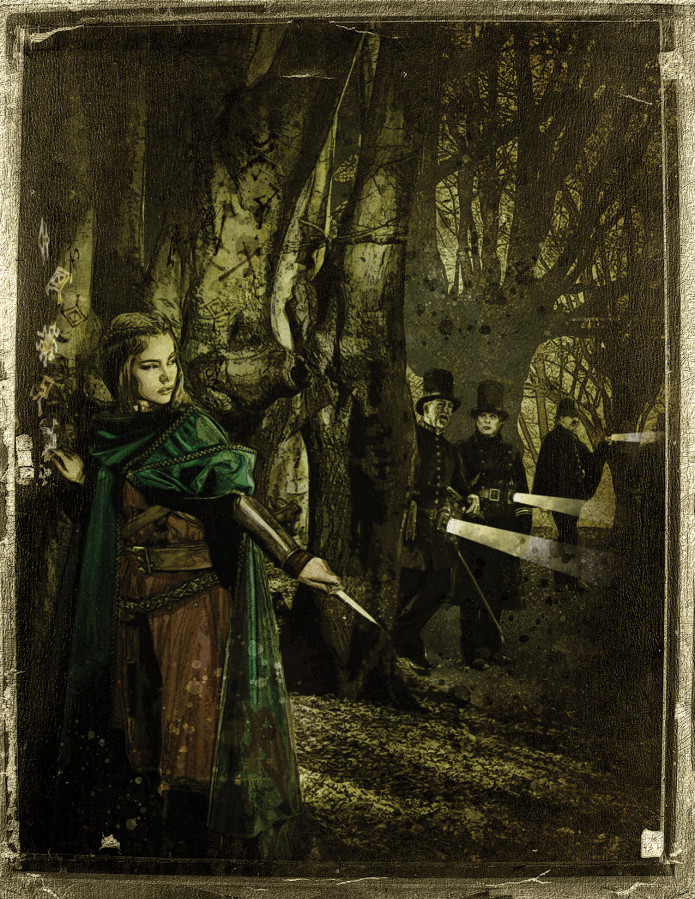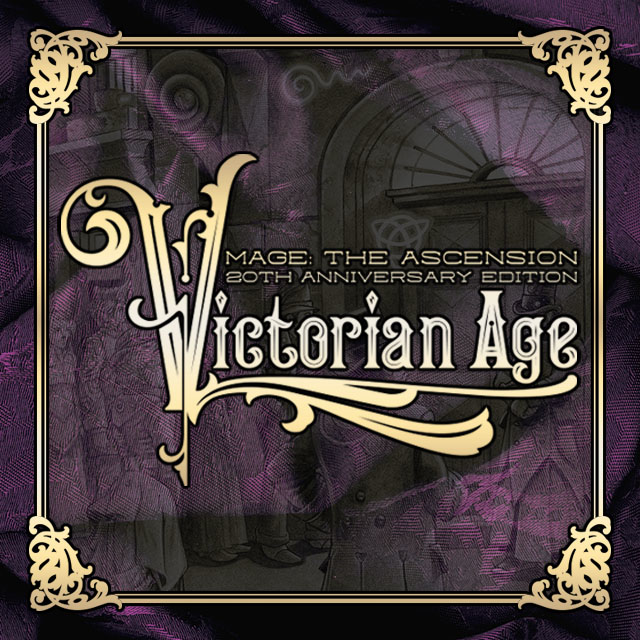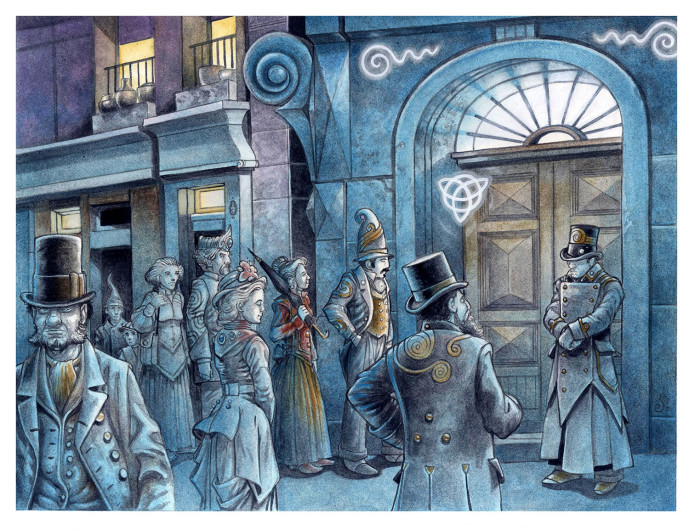Wed Feb 24 '21 Announcement
about 3 years ago
– Wed, Feb 24, 2021 at 06:51:10 AM
Hello Extraordinary Benefactors,
Welcome to Day 2 of our Victorian Mage campaign on Indiegogo. We've managed to weather the first day of this new experiment and the campaign is proceeding quite nicely. I'm still expecting some bumps and hiccups along the way, but that is the often the cost of change.
 In fact, that's the subject of today's update: The Cost of Progress! Progress, in this case, may just mean learning what works and what doesn't, and getting through the day without messing up anything too badly!
In fact, that's the subject of today's update: The Cost of Progress! Progress, in this case, may just mean learning what works and what doesn't, and getting through the day without messing up anything too badly!
I've got another bit from the Introduction to this book to share today. Thanks to everyone who's joined us on this voyage into an imagined past, and who's spread the world to let others know of our new location. If you're thinking about joining our Extraordinary group, I'll be sharing previews and fiction and other updates each day to hopefully provide enough information and incentive to help you reach your decision.
Remember, we will have a Pledge Manager set up after the campaign ends, so if you want to upgrade or get Add On perks at a later time, that is perfectly possible.
Now, let's dive in...

The Cost of Technological Progress
In Western Europe, the Order of Reason is solidifying its hold on both the paradigm and the hopes and imaginations of Sleepers. The result is a self-reinforcing system built on vast amounts of natural resources stolen via imperialist conquest. The Order of Reason develops or copies inventions like steam engines, percussion caps, electric light, and surgical anesthesia. It then popularizes these technologies, which in turn astound and excite many Sleepers, making them more open to future paradigm-altering inventions in what becomes a feedback loop. For the first time in human history, magi are able to alter the paradigm with both sufficient speed and over a large enough area that Sleepers began to see technology advance in substantial ways within a decade or two, rather than over generations or centuries. The Order of Reason’s connections to imperialist governments allows them to swiftly introduce new inventions all across the globe.
This was also an era when a large number of technomancers sincerely believed in their mission. Some members of the Order of Reason sought to improve the lives of Sleepers and uplift the entire world. However, they were still bound by their prejudices — the advances they create occur alongside atrocities they are directly or indirectly responsible for. Greedy and power-mad Sleepers use Maxim guns to slaughter tens of thousands of people who resist colonial conquest, and steamships transport colonizing armies faster and in greater numbers than previously possible. Although the consequences of their actions may trouble some members of the Order of Reason, most considered it a small price to pay for their grand endeavor, and continue to develop ever more deadly weapons. Ultimately, all but a handful of members of the Order of Reason care more about the fact that these conquests helped to spread their paradigm across the world than the horrors these conquests caused.
Even amid all the suffering, proponents of the Order’s paradigm would point to how new technology also produced wonders. New medical techniques helped countless Sleepers survive illnesses, injuries, or events like difficult childbirth that would previously have killed them. Other new technologies allowed for the printing and distribution of books and the spread of literacy to millions whose parents and grandparents were completely illiterate.
However, these wonders were distributed exceptionally unevenly. An unavoidable consequence of advancing technology and the changing paradigm was increased urbanization, as growing numbers of Sleepers left rural areas to work in urban factories and provide for the needs of these factory workers. For the first half of this era, cities were cesspits of disease and pollution, where residents lived harder and significantly shorter lives than people who lived in less crowded regions. Meanwhile, in rural areas and in nations far from western Europe, most of the wondrous new technologies were either absent, or only found in the hands of wealthy elites who were not inclined to share the benefits these new technologies provided.
This was also the era when the Order of Reason adopted and helped promulgate scientific racism, which ranked all of humanity on a scale with white western European men at the top. Some Order members sincerely believed in it, but all of them found it to be a convenient justification for imperialist exploitation of non-European nations. However, despite their efforts, the Technocratic Union was never able to bring scientific racism into the paradigm itself, because the targets of these claims, those who it would establish as somehow lesser, firmly knew they were not innately inferior in mind or body to the imperialists who wanted to steal their land and their labor. Their living experience, and indeed their very existence, served as a bulwark against such a malignant change to the model of reality.

Resistance
Resistance to conquest and oppression is one of the central themes of this era. Across the globe, imperialist forces conquer and oppress indigenous peoples, while these same peoples struggle to preserve their freedom and their way of life. However, oppression and resistance aren’t limited solely to colonized peoples. In a very real sense, much of the history of the Victorian Era is the history of a relatively small number of exceptionally wealthy western European men extracting vast sums of wealth from everyone else. In western Europe, income inequality soared during the Victorian era, and until the 1880s the lives of the European poor and working class were, at best, no better than they had been at the beginning of this era.
One of the driving forces of this growing inequality was the Order of Reason. This was a time before consumer capitalism, when the Order of Reason largely consisted of members of the educated, wealthy elite who cared far more about extending their paradigm across the globe and increasing their own power than about improving the lives of Sleepers. Some new technologies they helped create aided large numbers of people, but most primarily or exclusively aided the wealthy, like machines that enabled them to employ fewer workers while making ever greater profits or new farming techniques that drove the poor off of ancestral lands. Both within western Europe and abroad, objections to industrialization among the lower classes became common and occasionally violent.
As a result, unskilled and semi-skilled workers came together to create the first modern labor unions and to perform actions like the London dockworkers strike of 1889, where almost 100,000 strikers won better pay and also helped raised support for unions across Great Britain. Protests and even outright rebellions against European imperialism, like the Indian Rebellion of 1857 and the Chinese Boxer rebellion of 1899, also ignited in colonized nations across the globe.
Imperialism
By the second half of the 19th century, even Sleepers using completely mundane technologies could, in theory, completely circumnavigate the world in less than three months, permitting a level of travel and contact with distant and radically different cultures never before possible for anyone except powerful magi. The vastly increased speed of travel and the potential for cross-cultural contact that came with it could have ushered in a new era of wisdom and understanding. However, the Order of Reason and a disturbingly large number of Sleepers had little interest in peaceful contact with distant cultures. Instead, one of the hallmarks of the Victorian era was imperialism.
The first colonial conquests began with the Spanish colonization of the Americas in the early 16th century, and the Dutch colonization of India in the 17th century. Both efforts were relatively limited in scale. A combination of ill luck, inferior weapons, and rapacious tactics rendered the inhabitants of the Americas exceedingly vulnerable to European diseases and permitted a small number of invaders to conquer a large region. Similarly, in India the Dutch made trade deals with powerful local leaders and swiftly and brutally exploited instabilities caused by local wars.
However, the efforts of the Order of Reason and a small number of wealthy and powerful European merchants and politicians vastly increased the scale of colonial expansion that followed. Using large numbers of troops, and covertly aided by the Order of Reason’s most destructive magicks, colonial forces were now able to destabilize or conquer entire nations that were not already crumbling due to epidemics or civil war. By the dawn of the Victorian era, colonialism began transforming into imperialism. Rather than just settling colonies and using military force to seize natural resources or ensure favorable trade arrangements, a growing number of western European nations began conquering and ruling entire nations.
One part of the motivation for this transformation was Europe’s growing nationalism. Western European nations attempt to both prove their superiority by conquering ever more territory, while also working to reduce the power and wealth of their rivals by preemptively conquering and holding regions these nations were interested in. Alongside nationalism came raw greed. For small numbers of wealthy western Europeans, imperialism offered an opportunity to obtain funding and support from their nations’ governments. If their efforts were successful, they could then extract vastly more wealth from the nations they conquered and ruled, both in the form of booty from an initial conquest and from the vast array of taxes, fees, and tariffs they imposed on colonized peoples. While the Order of Reason endorsed imperialism as a method of imposing their paradigm on increasingly large sections of the planet, much of its appeal to the Conventions’ leaders was the chance to gain truly vast amounts of wealth and mundane power, extracting both from the inhabitants of the conquered nations.

#M20VA
#VictorianMage





